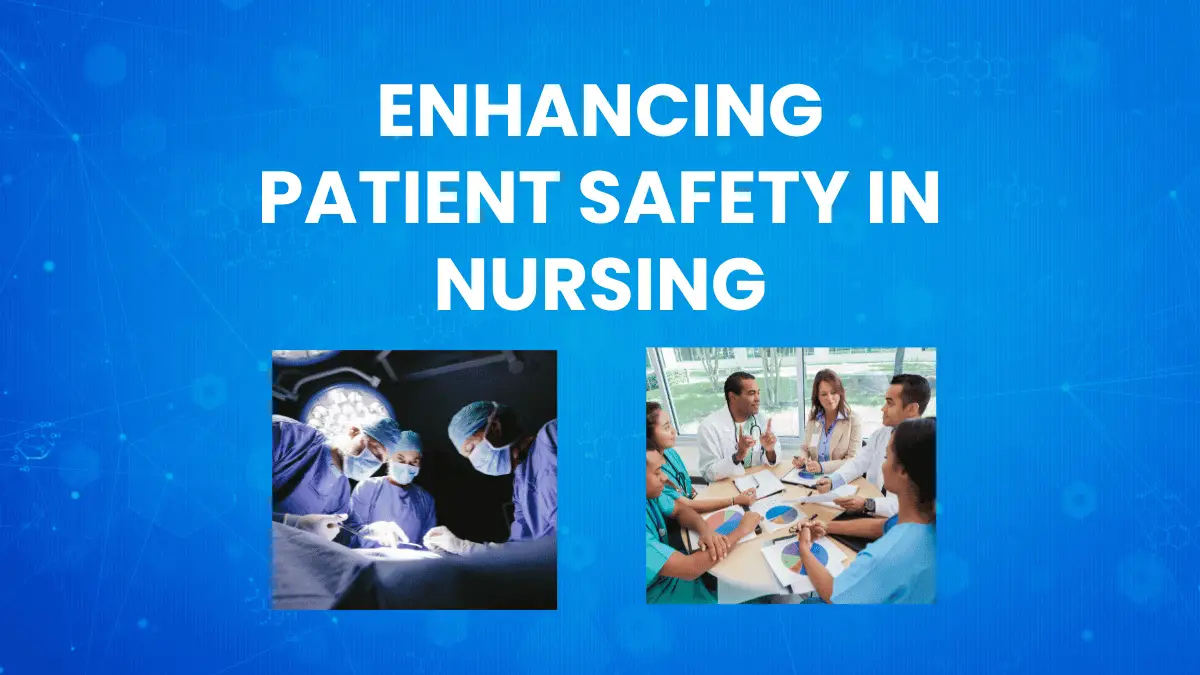Patient safety is paramount in nursing practice, encompassing a range of measures aimed at preventing errors, reducing risks, and ensuring optimal outcomes for patients. In this comprehensive guide, we delve into the strategies and best practices that nurses can implement to improve patient safety effectively.
Understanding Patient Safety in Nursing:
Patient safety in nursing refers to the proactive measures taken to prevent errors, adverse events, and harm during the delivery of healthcare services. It involves a multidimensional approach that encompasses clinical practice, communication, teamwork, and organizational culture.
Table: Common Medication Errors and Preventive Measures
| Medication Error | Preventive Measures |
|---|---|
| Incorrect Dosage | Double-check medication orders and dosages |
| Administration Errors | Utilize barcode scanning systems for medication verification |
| Drug Interactions | Conduct thorough medication reconciliation |
| Allergic Reactions | Obtain detailed medication histories from patients |
Key Elements of Patient Safety:
- Communication: Effective communication among healthcare professionals is essential for patient safety. Clear and concise communication helps in conveying vital information, coordinating care, and preventing errors. Utilizing standardized communication tools such as SBAR (Situation, Background, Assessment, Recommendation) can facilitate effective communication among healthcare team members.
- Medication Safety: Medication errors pose a significant threat to patient safety. Nurses play a crucial role in ensuring safe medication administration by verifying prescriptions, double-checking dosages, and educating patients about their medications. Implementing barcode scanning systems and medication reconciliation processes can further enhance medication safety.
- Infection Control: Preventing healthcare-associated infections is integral to patient safety. Nurses adhere to strict infection control protocols, including hand hygiene, use of personal protective equipment, and proper disinfection of equipment and surfaces. Regular surveillance, education, and adherence to evidence-based guidelines are key strategies for infection prevention.
- Fall Prevention: Falls are a common cause of injury among hospitalized patients. Nurses conduct comprehensive fall risk assessments and implement preventive measures such as bed alarms, non-slip footwear, and assistance with mobility. Patient education regarding fall risks and precautions is also essential to prevent falls.
Best Practices for Improving Patient Safety:
- Standardized Protocols: Implementing standardized protocols and procedures promotes consistency and reduces the risk of errors. Nurses should adhere to evidence-based guidelines and protocols in clinical practice, such as those outlined by professional organizations and regulatory agencies.
- Continuing Education: Lifelong learning is essential for nursing professionals to stay updated on best practices and advancements in patient safety. Participating in continuing education programs, attending conferences, and pursuing certifications can enhance nurses’ knowledge and skills in patient safety.
- Interprofessional Collaboration: Collaborating with other healthcare professionals fosters a culture of safety and improves patient outcomes. Nurses should actively engage in interprofessional teamwork, communication, and collaboration to address patient safety issues effectively.
- Quality Improvement Initiatives: Participating in quality improvement initiatives allows nurses to identify areas for improvement and implement evidence-based strategies to enhance patient safety. Quality improvement projects, such as root cause analysis and process mapping, can lead to significant improvements in patient care.
Conclusion:
Improving patient safety in nursing requires a multifaceted approach that encompasses communication, medication safety, infection control, fall prevention, and adherence to best practices. By implementing standardized protocols, continuing education, interprofessional collaboration, and quality improvement initiatives, nurses can mitigate risks and ensure the delivery of safe and high-quality care to patients.


